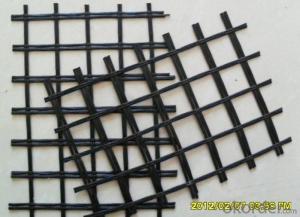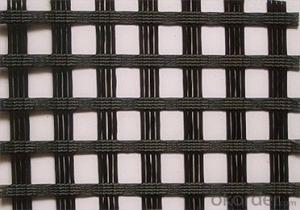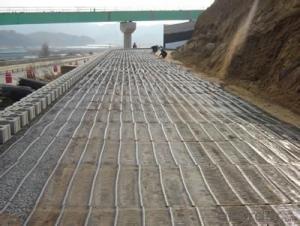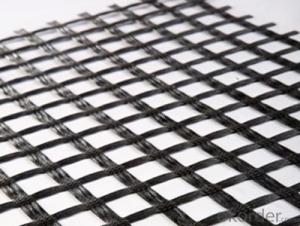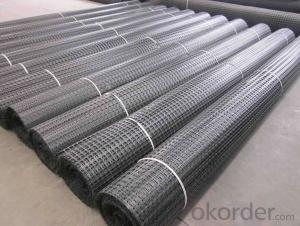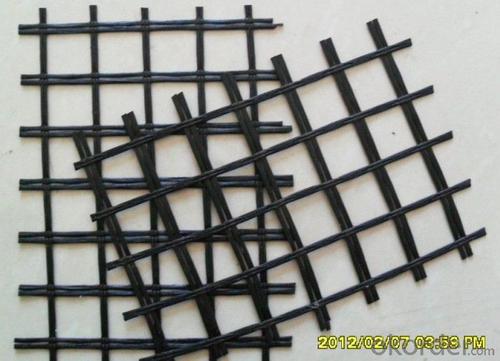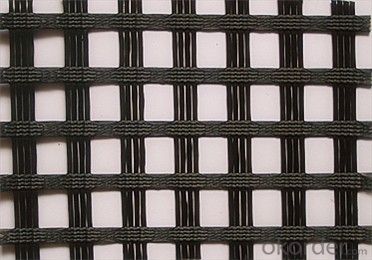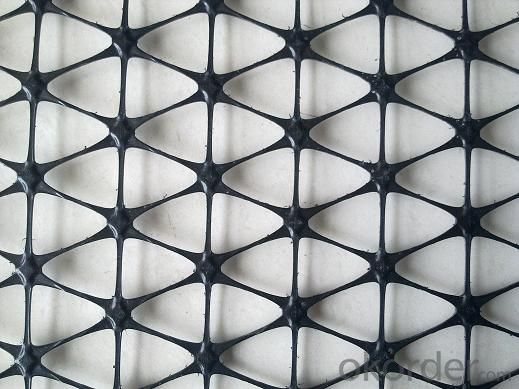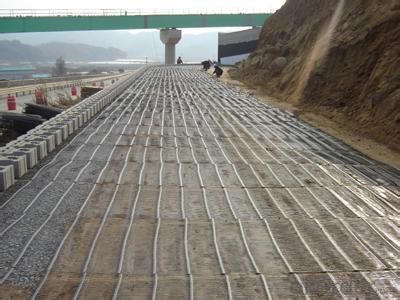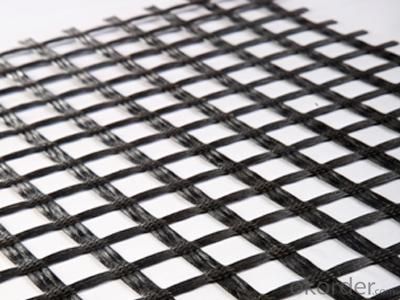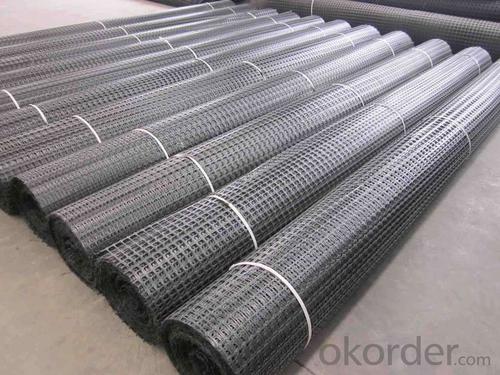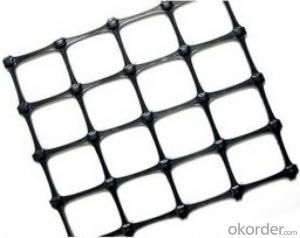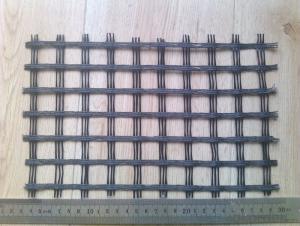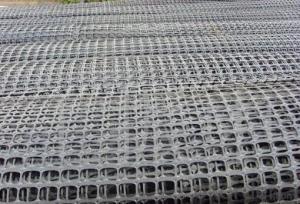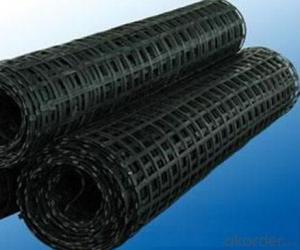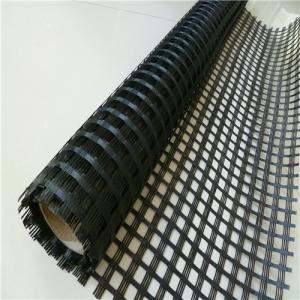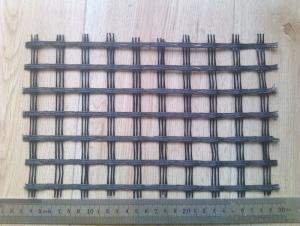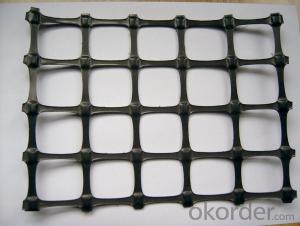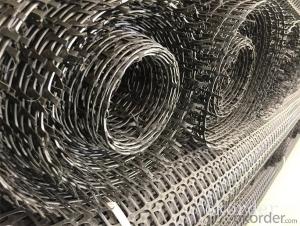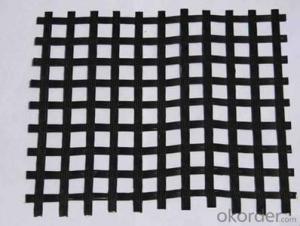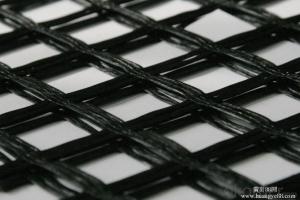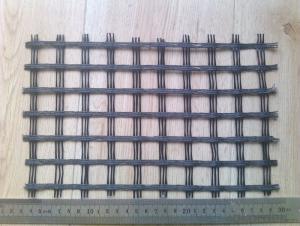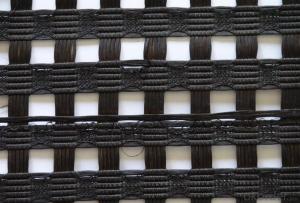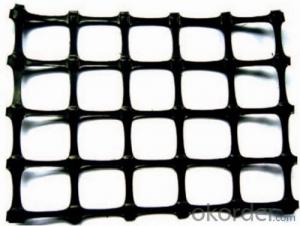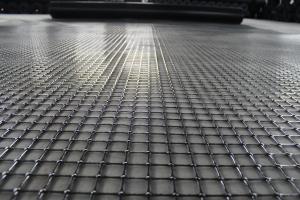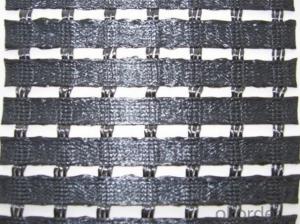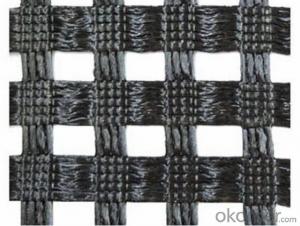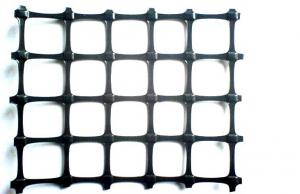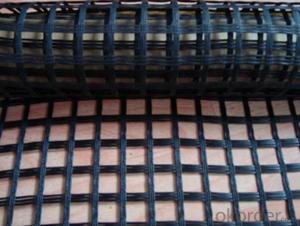Europe Geogrids Market Plastic Polypropylene Biaxial Geogrid for Road Reinforcement
- Loading Port:
- Qingdao
- Payment Terms:
- TT OR LC
- Min Order Qty:
- 30000 m²
- Supply Capability:
- 500000 m²/month
OKorder Service Pledge
OKorder Financial Service
You Might Also Like
Structure of Plastic Polypropylene Biaxial Geogrid:
Plastic Polypropylene Biaxial Geogrid is made by weaving and covering fiberglass filament. It is featured by high vertical and horizontal tensile strength, low unit extension, high flexibility, and favorable high and low temperature resistance. The products after surface covering own the favorable property of alkali resistance and aging resistance.also used to strengthen the soft land, such as railway, airport, irrigation work, and dyke, etc, and the roadbed A.
Main Features of Plastic Polypropylene Biaxial Geogrid:
fiberglass geogrid for soil reinforcement
fiberglass geogrid
High tensile strength, low elongation
High stability
Plastic Polypropylene Biaxial Geogrid Images
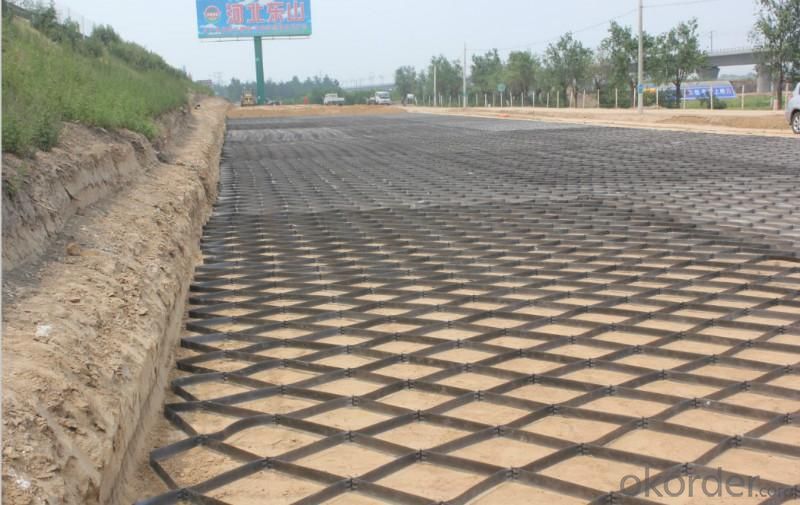
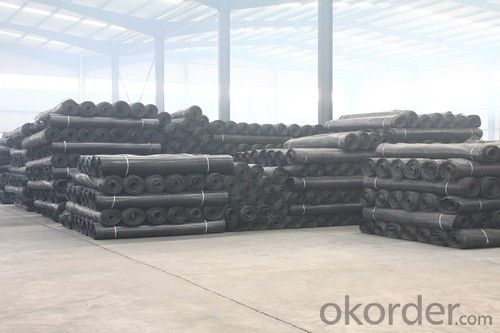
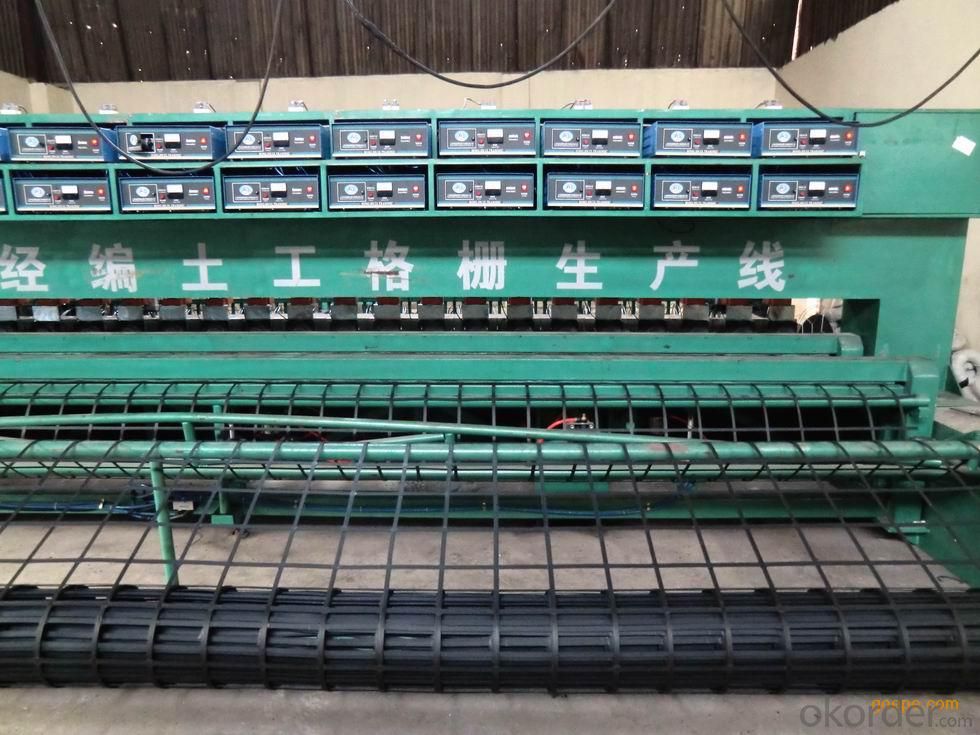
Butimen Coated Plastic Polypropylene Biaxial Geogrid
Glass Fiber Geogrid GGF80 Technical Specification | |||
Property | Test Method | Unit | Index |
Wide Width Tensile Strength | |||
MD | KN/M | ≥80 | |
CMD | KN/M | ≥80 | |
Elongation At Break | ≤4 | ||
Grid | MM | 25.4×25.4 | |
Width | M | 1~6 | |
Packaging | Details | ||
Roll Dimensions(W×L) | According to customer requirements | ||
Square Meters Per Roll | |||
Estimated Roll Weight | |||
It is widely used in Asphalt wall, railway foundation, dike slope, runway and sand harnessing.
FAQ
We have organized several common questions for our clients,may help you sincerely:
Q: How about your company?
A:Our company are one of the largest geosynthetic products supplier in the world.We have the products experience more than 20 years.Already export to USA/Germeny/Australia/Zambia/Brazil etc.more than 20 countries.Almost 10years.Our products including Geocell/Fiberglass Geogrid/Geomembrane/Geotextile/Geonet etc.
Q.Does your products have good qualitity?
A:Yes,we have do many big projects such as the 2008 Beijing Olympic BIRD NEST. Divert water from the south to the north project. And our products have CE certificate also.
Q:How long can we receive the products after purchase?
A:In the purchase of product within three working days, We will arrange the factory delivery as soon as possible. The pecific time of receiving is related to the state and position of customers.Commonly 15-20 working days can be delivery.
- Q: Can geogrids be used in environmental containment systems?
- Yes, geogrids can be used in environmental containment systems. Geogrids are commonly used to reinforce and stabilize earth structures such as slopes and retaining walls. In environmental containment systems, geogrids can be utilized to enhance the stability and strength of liners and barriers, preventing soil erosion and providing long-term durability. They can also improve the overall performance of containment systems by increasing their load-bearing capacity and reducing the potential for geotechnical failures.
- Q: How much is a glass fiber mesh
- Alkali resistant glass fiber mesh cloth big price difference, and the alkali resistant glass fiber mesh quality, high tensile strength, elasticity, tensile strength and elongation between alkali resistant glass fiber mesh elastic limit, so the glass fiber mesh cloth price range is large, with "Jining wellav" WL-0812 series products the price, floating in the price range of $0.32--5
- Q: I am a quality inspector, I would like to know what is the standard implementation of Geogrid
- There are many kinds of geogrid, there are several standards
- Q: How do geogrids help in reducing the risk of soil erosion?
- Geogrids help in reducing the risk of soil erosion by providing reinforcement to the soil, increasing its stability and resistance to erosion. They are typically made of strong materials, such as plastic or polymer, and are installed beneath the topsoil or within the soil layers. Geogrids act as a barrier, distributing the load and reducing the pressure on the soil. This prevents soil particles from being washed away by water or wind, thus minimizing erosion and preserving the integrity of the landscape.
- Q: How do geogrids prevent cracking in asphalt pavements?
- Geogrids prevent cracking in asphalt pavements by distributing and reinforcing the load from traffic and reducing tensile stresses within the pavement. Additionally, they enhance the overall structural integrity and stability of the pavement by minimizing differential settlements and controlling reflective cracking.
- Q: Geogrid is divided into several?
- Main production, geotextile, geogrid, geomembrane
- Q: How do geogrids help with slope stabilization?
- Geogrids help with slope stabilization by providing tensile reinforcement to the soil, increasing its overall strength and stability. The geogrids are placed within the soil layers and act as a support system, preventing soil erosion and reducing the risk of slope failure or collapse.
- Q: What is the effect of installation spacing on geogrid behavior?
- The effect of installation spacing on geogrid behavior is that it can impact the overall stability and strength of the geogrid system. Proper spacing ensures that the geogrids are installed at the correct intervals, allowing them to distribute the load evenly and provide effective reinforcement. Incorrect spacing can lead to inadequate reinforcement, reduced performance, and potential failure of the geogrid system.
- Q: Can geogrids be used in reinforcement of soil-bentonite mixtures?
- Yes, geogrids can be used in the reinforcement of soil-bentonite mixtures. Geogrids are commonly used as a geosynthetic material to enhance the stability and strength of soil and other materials. When combined with soil-bentonite mixtures, geogrids can improve the overall performance and load-bearing capacity of the mixture. The geogrids provide reinforcement and prevent the potential failure or deformation of the soil-bentonite mixture, making it a suitable option for various engineering applications.
- Q: How do geogrids improve the performance of reinforced soil walls?
- Geogrids improve the performance of reinforced soil walls by providing tensile strength and stability to the soil structure. They act as a reinforcement material, distributing the applied loads and preventing soil movement and potential failure. The geogrids interlock with the surrounding soil, increasing its resistance to lateral forces and improving overall stability and durability of the reinforced soil wall.
Send your message to us
Europe Geogrids Market Plastic Polypropylene Biaxial Geogrid for Road Reinforcement
- Loading Port:
- Qingdao
- Payment Terms:
- TT OR LC
- Min Order Qty:
- 30000 m²
- Supply Capability:
- 500000 m²/month
OKorder Service Pledge
OKorder Financial Service
Similar products
Hot products
Hot Searches
Related keywords
